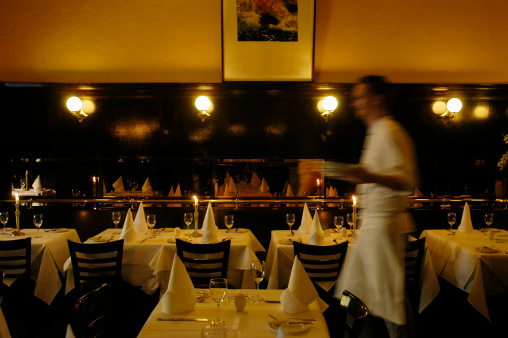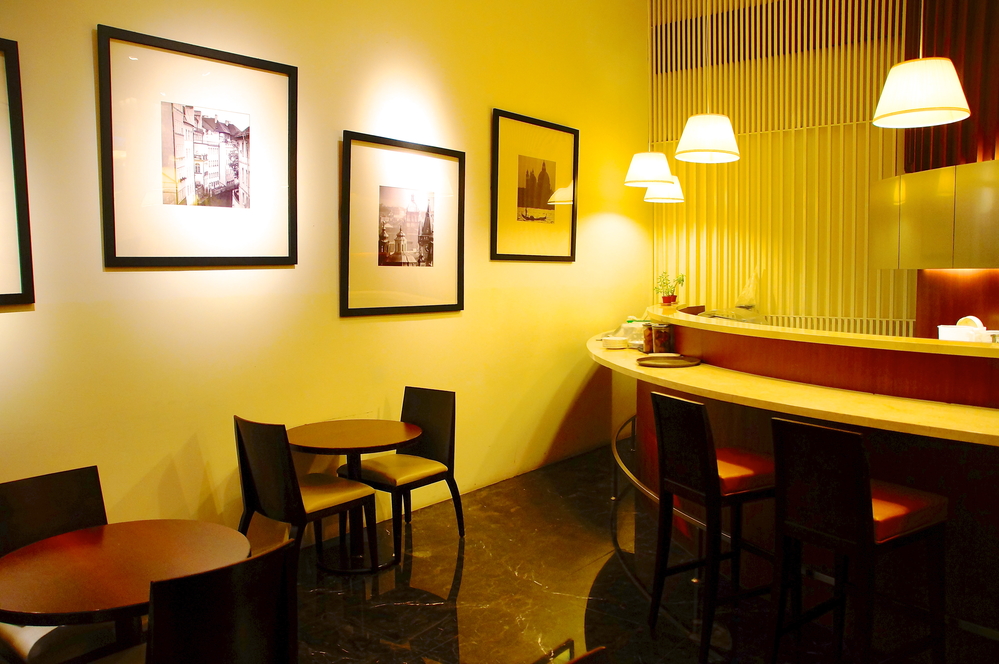Asian Fusion Restaurant: A Distinct Dining Experience in the Heart of Islamabad
Asian Fusion Restaurant: A Distinct Dining Experience in the Heart of Islamabad
Blog Article
Savor Authentic Oriental Cuisine With a Pan-Asian Twist for a Cooking Journey
Embarking on a cooking journey via genuine Oriental cuisine, boosted with a Pan-Asian twist, offers a distinct opportunity to check out the abundant tapestry of flavors that define the region's varied cooking traditions. As you contemplate these enticing meals, consider the social stories and historic impacts that form them, each bite using a story waiting to be found. Romantic restaurants Islamabad.

Checking Out Pan-Asian Tastes
In the world of worldwide gastronomy, Pan-Asian cuisine attracts attention for its impressive diversity and the harmonious interaction of flavors from numerous Oriental cultures. This cooking strategy celebrates the special components and abundant customs discovered throughout the continent, developing a tapestry of tastes that is both intriguing and gratifying. Secret to Pan-Asian cuisine is its capacity to stabilize contrasting tastes-- sweet, salted, spicy, and sour-- while highlighting the quality and quality of each component.
From the umami-rich soy sauce of Japan to the intense chili peppers of Thailand, Pan-Asian food uses a comprehensive scheme of flavors. These aspects are often incorporated in inventive methods, boosting meals with layers of complexity. For circumstances, making use of aromatic natural herbs such as lemongrass and cilantro, common in Vietnamese and Thai cuisine, adds a revitalizing brightness to recipes, while the unification of coconut milk delivers a creamy, abundant texture.
The emphasis on fresh produce and fragrant flavors ensures that each meal is not just a feast for the taste buds yet additionally for the senses. Pan-Asian cuisine invites restaurants to start a culinary journey, discovering the huge and varied landscapes of Oriental gastronomy with every bite.
Fusion Recipes to Attempt
While Pan-Asian cuisine is celebrated for its conventional tastes, the modern cooking landscape is progressively accepting fusion recipes that blend these timeless components with influences from other areas. This innovative approach not just honors the rich heritage of Eastern culinary arts yet likewise introduces unique taste experiences that interest contemporary tastes.
An archetype of such a fusion dish is the Korean-Mexican taco, where marinated bulgogi beef is covered in a cozy tortilla, topped with kimchi and a spicy gochujang-infused salsa. This combination weds the bold, full-flavored flavors of Korea with the vivid, fresh components of Mexican cuisine. Likewise, sushi burritos have obtained appeal, amalgamating the fragile creativity of Japanese sushi with the passionate, hand-held comfort of a burrito, commonly featuring combination active ingredients like tempura shrimp and avocado with a drizzle of wasabi mayo.
One more notable recipe is Thai curry ramen, which infuses the luscious, aromatic seasonings of Thai curry right into the reassuring brew of standard Japanese ramen, creating a harmonious blend that entices the senses. These fusion meals expand beyond simple uniqueness; they stand for a culinary dialogue between societies, encouraging exploration and advancement on the planet of Pan-Asian cuisine.
Important Components and Flavors
To absolutely appreciate Pan-Asian cuisine, one need to comprehend the essential components and flavors that develop its structure. This varied cooking design attracts from an abundant tapestry of Asian traditions, utilizing a harmonious blend of tastes and structures. Key active ingredients include soy sauce, fish sauce, and oyster sauce, which impart a see post mouthwatering umami deepness important to Eastern dishes. Complementary to these are rice vinegar and mirin, lending a delicate acidity and sweetness.
Fragrant aspects are critical, with lemongrass, garlic, and ginger being common across various Pan-Asian dishes. These components provide a fragrant base that enhances the intricacy of flavors. Seasonings such as celebrity anise, cardamom, and cinnamon present warmth and personality, resembling influences from areas like China and India.

Food Preparation Techniques and Tips
Understanding the art of Pan-Asian cuisine calls for familiarity More Info with its unique food preparation techniques, each adding to the lively tapestry of tastes this culinary custom is celebrated for. Central to these approaches is the stir-fry, a quick cooking method that maintains the nutritional stability and dazzling shades of ingredients. Making use of a wok, the stir-fry technique enables also warm circulation, vital for attaining the particular appearance and taste balance of Pan-Asian dishes.
Another fundamental technique is steaming, especially widespread in Chinese food. This mild approach maintains the natural flavors and nutrients of components, making it suitable for fish and shellfish and vegetables. Dumplings, a cherished staple, commonly gain from steaming, causing soft, succulent structures.
Grilling, also essential, passes on smoky depths to dishes such as Korean bulgogi or Japanese yakitori (Best ambiance restaurants Islamabad). This technique frequently involves seasoning active ingredients, enabling flavors to permeate deeply before food preparation over an open flame or warmer
Last but not least, understanding the art of balancing flavors-- sweet, sour, salty, bitter, and umami-- is critical. Effectively layering these components can raise a recipe from ordinary to phenomenal, using a complex and satisfying culinary experience that personifies the essence of Pan-Asian food.
Dining Experiences Worldwide
Across the globe, Pan-Asian food provides an unequaled dining experience, celebrated for visit the website its abundant tapestry of flavors and vibrant discussions. This culinary phenomenon has actually transcended social boundaries, catching the hearts and palates of food fanatics worldwide. In multicultural cities fresh York, London, and Sydney, Pan-Asian dining establishments function as melting pots where cooking customs from Thailand, Japan, China, and past merge, supplying diners with an eclectic mix of recipes that highlight the area's variety.
The international appeal of Pan-Asian food depends on its ability to provide both credibility and innovation. Cooks masterfully wed traditional ingredients such as lemongrass, soy sauce, and miso with modern strategies, resulting in dishes that are both refreshingly brand-new and familiar. This fusion allows diners to start a cooking trip that values heritage while embracing modernity.
Furthermore, eating experiences are elevated through thoughtfully designed environments that show the principles of Pan-Asian looks. From minimal Japanese-inspired insides to vivid Thai-themed rooms, each dining establishment supplies an unique setting that complements the culinary offerings. Therefore, patrons are not just taking in a meal however partaking in a social experience, making Pan-Asian dining an absolutely worldwide phenomenon.
Verdict
The expedition of Pan-Asian cuisine offers a profound understanding of the detailed interaction of flavors and culinary traditions across Asia. By welcoming fusion recipes such as Thai curry ramen and sushi burritos, the culinary trip not only highlights the adaptability of standard ingredients yet likewise showcases ingenious modern-day strategies. This gastronomic journey, enriched by important seasonings and cooking approaches, gives an unique possibility to value the multiculturalism and cooking virtuosity that specify Pan-Asian food on an international scale.
Embarking on a culinary journey via genuine Oriental food, improved with a Pan-Asian twist, provides a distinct possibility to explore the abundant tapestry of flavors that define the area's diverse cooking customs.In the realm of worldwide gastronomy, Pan-Asian food stands out for its amazing variety and the harmonious interplay of tastes from different Eastern cultures. Secret to Pan-Asian cuisine is its ability to balance different flavors-- wonderful, salty, spicy, and sour-- while highlighting the quality and quality of each component.

Report this page